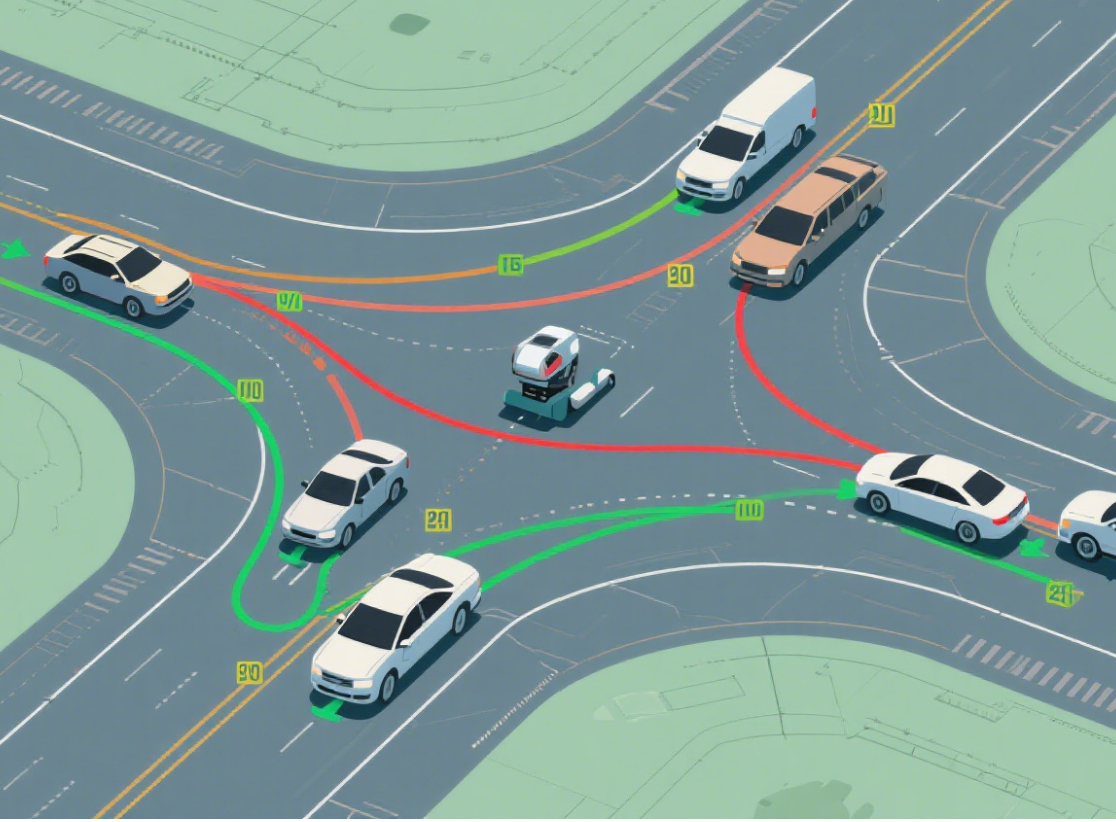Multi-Target Discrimination: The Hidden Advantage of mmWave Radar in Smart Traffic
In modern cities, traffic environments are rarely simple. Intersections often involve multiple lanes filled with cars, buses, bicycles, and pedestrians all moving at different speeds and directions. For intelligent traffic management systems, detecting these targets accurately and distinguishing them in real time is one of the most complex technical challenges.
Traditional sensing technologies—such as inductive loop detectors, infrared sensors, and video cameras—have been widely deployed in traffic monitoring. However, they struggle in scenarios where multiple objects overlap or move simultaneously within the same field of view. This is where millimeter-wave (mmWave) radar shows a decisive advantage: its multi-target discrimination capability.
Why Multi-Target Detection Matters
Imagine a busy urban intersection at rush hour. Cars are waiting at red lights, cyclists weave between lanes, and pedestrians are stepping off the curb. For traffic systems, failing to distinguish between these targets can lead to incorrect vehicle counts, delayed signal changes, or even safety risks for vulnerable road users.
Multi-target discrimination enables systems to:
-
Accurately count and classify vehicles even in dense traffic.
-
Separate moving objects from stationary ones, preventing errors in detection.
-
Recognize vulnerable road users such as pedestrians and cyclists in real time.
-
Enable Vehicle-to-Everything (V2X) communication where precise object-level data improves automated driving decision-making.
Without this capability, intelligent traffic solutions would remain blind to the true complexity of the road.
How mmWave Radar Achieves Multi-Target Discrimination
The foundation of mmWave radar’s strength lies in its operating principle. By transmitting electromagnetic waves in the 60–81 GHz band and analyzing the reflected signals, radar can extract not only range and velocity but also angular resolution.
1. Range Resolution
High-frequency mmWave radar achieves fine range resolution, meaning it can distinguish two objects even if they are only a short distance apart along the same line of sight. For instance, a stopped vehicle and a cyclist directly behind it will be seen as two separate targets rather than one.
2. Doppler Velocity Measurement
Unlike cameras, radar inherently measures velocity using the Doppler effect. This makes it possible to separate a moving pedestrian from a stationary signpost, even if both occupy nearly the same position in the image plane.
3. Angular Resolution with MIMO Antennas
Modern mmWave radar modules, such as Linpowave’s V300 series, leverage MIMO (Multiple Input Multiple Output) antenna configurations. This significantly improves angular resolution, allowing radars to distinguish objects that are side-by-side—such as two cars in adjacent lanes.
4. Advanced Signal Processing
By applying beamforming, clustering algorithms, and machine learning, radar systems can track multiple trajectories simultaneously. This enables stable detection in scenarios where targets intersect, such as when pedestrians cross in front of vehicles.
Advantages Over Traditional Sensors
Cameras
-
Weakness: Susceptible to poor lighting, glare, and weather conditions.
-
Radar Advantage: Operates reliably in rain, fog, and night conditions while maintaining object separation.
Inductive Loops
-
Weakness: Detect only the presence of large metal vehicles, offering no ability to distinguish multiple targets or vulnerable road users.
-
Radar Advantage: Detects vehicles, cyclists, and pedestrians alike, with simultaneous classification.
Infrared Sensors
-
Weakness: Limited range and difficulty in distinguishing overlapping heat signatures.
-
Radar Advantage: Provides long-range detection (up to 300 m with Linpowave’s V200) and separates closely spaced objects with high resolution.
Real-World Applications
1. Smart Intersections
At complex junctions, radars with multi-target capability allow traffic lights to dynamically adapt to flow. Instead of relying on static timers, systems can prioritize green lights for heavily congested directions while ensuring pedestrian safety.
2. Highway On-Ramps
When multiple vehicles merge at different speeds, radar sensors accurately track their individual trajectories. This data supports ramp metering systems that reduce congestion and enhance safety.
3. Vulnerable Road User (VRU) Protection
Cyclists and pedestrians often move unpredictably. Radar ensures that they are detected and tracked separately, even when near or behind larger vehicles. This is critical for automated braking systems in connected vehicles.
4. Connected Vehicle Ecosystems
In V2X applications, radars provide the reliable target-level data needed for autonomous decision-making. Multi-target discrimination ensures that vehicles receive accurate situational awareness, even in crowded traffic.
Deployment Considerations
While mmWave radar offers significant advantages, successful deployment requires careful consideration:
-
Sensor Placement: Proper height and angle are critical to maximize angular resolution and minimize occlusions.
-
Integration with Other Sensors: Radar works best when fused with cameras or LiDAR for classification refinement.
-
Calibration & Algorithms: The raw radar data must be paired with robust signal processing for effective multi-target tracking.
Conclusion
Multi-target discrimination is not just a technical specification; it is the key to unlocking the next generation of smart traffic systems. By distinguishing vehicles, pedestrians, and cyclists in real time, mmWave radar bridges the gap left by traditional sensors and ensures safety, efficiency, and scalability for intelligent transportation.
For cities seeking to reduce congestion and protect vulnerable road users, adopting radar technology with strong multi-target capability—such as Linpowave’s radar solutions—is no longer optional. It is the foundation of a truly smart traffic ecosystem.



